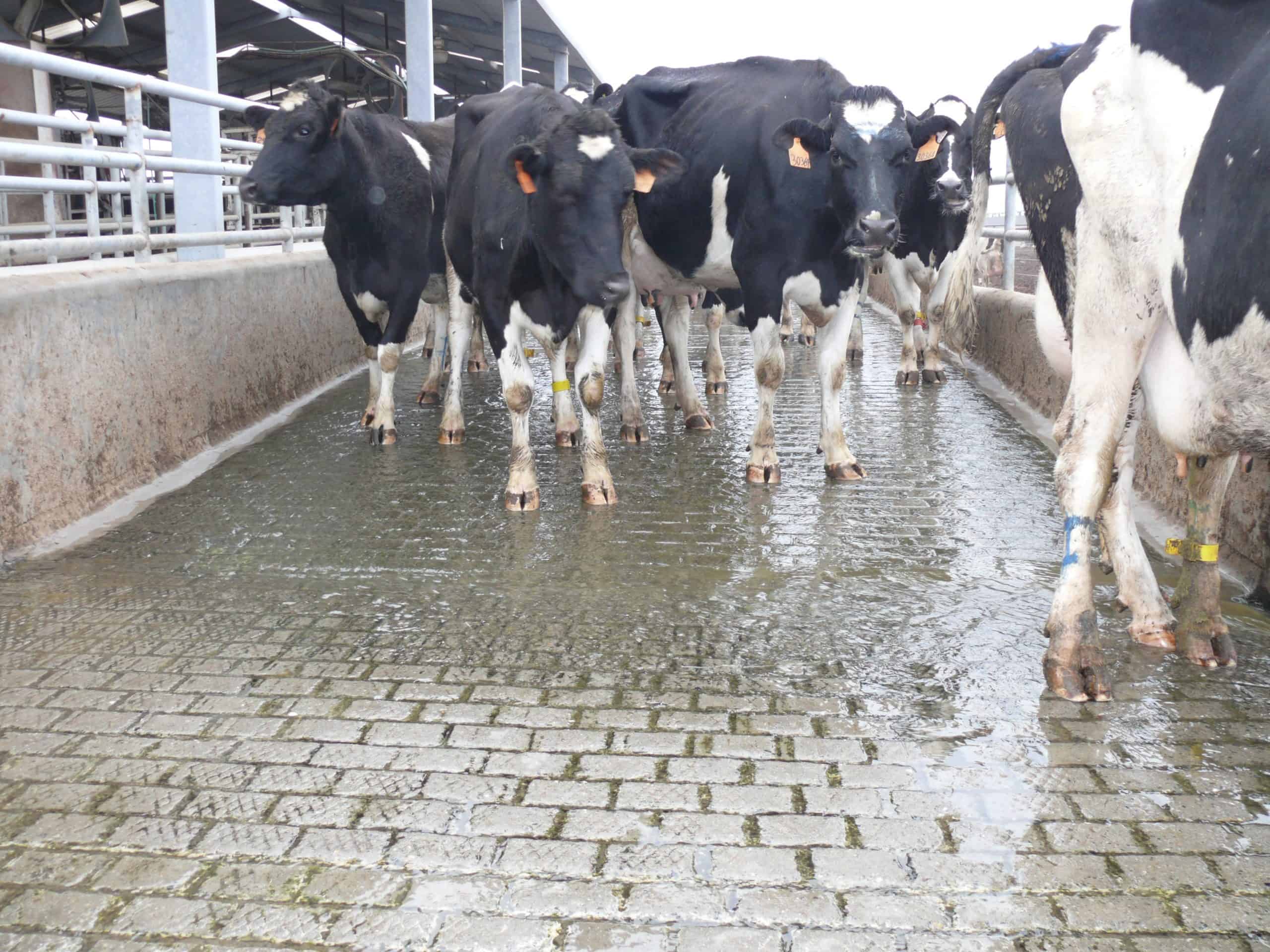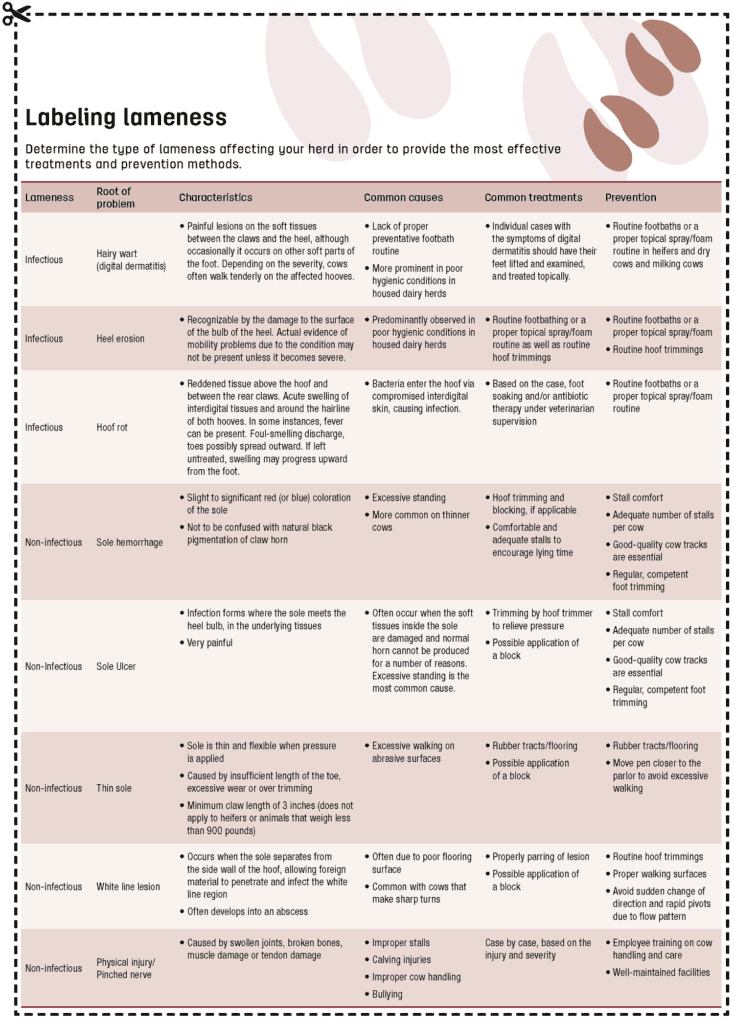
By definition, lameness is any abnormality that causes a cow’s gait to change. However, within this broad term are very specific types of hoof lesions and injuries, and each requires specialized treatment for the best recovery opportunity.
There are several causes of lameness found on a dairy farm. They range from biomechanical injuries to infections to injuries and more. That is why it is important to identify and differentiate between the causes of lameness, as the control and treatment methods for each cause will differ. For example, the protocol used for sole ulcers differs from a protocol for digital dermatitis (hairy warts).
Once a dairy producer is aware of the lameness presence in the herd, the next step is to understand what is triggering the hoof health challenge. As previously stated, there are multiple sources of lameness, with the main causes being:
The chart describes several of the main types of lameness, as well as characteristics, treatment and prevention methods for each ailment (see Labeling Lameness chart).

Click here to view it at full size and in an new window.
These are not the only causes of lameness but the ones that occur most on dairies. Dietary issues, respiratory infections and improper stall size can also lead to lameness. If you cannot detect the cause right away, it is best practice to get a vet or hoof trimmer on-site as soon as possible. They will then be able to inspect the herd and instruct on the best treatment method.
In a perfect world, a preventative plan is in place on the farm to reduce the chances of lameness and save the farm money long term. With proper preventative measures, lost milk production can be avoided, the spread of infectious diseases can come to a halt, and money is saved without the need for an emergency vet or hoof trimmer visit.
An ideal preventative plan includes:
1. Proper and regular hoof trimmings to ensure good shape and overall health. This helps reduce biomechanical issues and injuries.
2. Consistent footbath routine or a proper topical spray/foam routine to prevent foot rot and digital dermatitis.
3. Ensure farm employees are properly trained on cow handling and that the barn and environment are properly maintained.
If a farm has a preventative plan in place and follows it, most lameness issues should remain minimal. Occasionally, a few in the herd may show signs of lameness no matter how perfect the preventative plan. Take action right away at the onset of lameness symptoms, before it spreads. Ask for help from a dairy specialist to create a proper preventative plan.
One last thing we want to understand is the economics of lameness. Research shows lameness reduces productivity at peak yield by up to 20 percent, at an estimated cost of $350 per case. There is money to be made by tending to lameness issues when they first emerge. On an average well-run farm with timely intervention, preventative care will make the dairy considerable dollars. Trained trimmers with the correct equipment make a difference. The safe and timely intervention will take care of your cows.